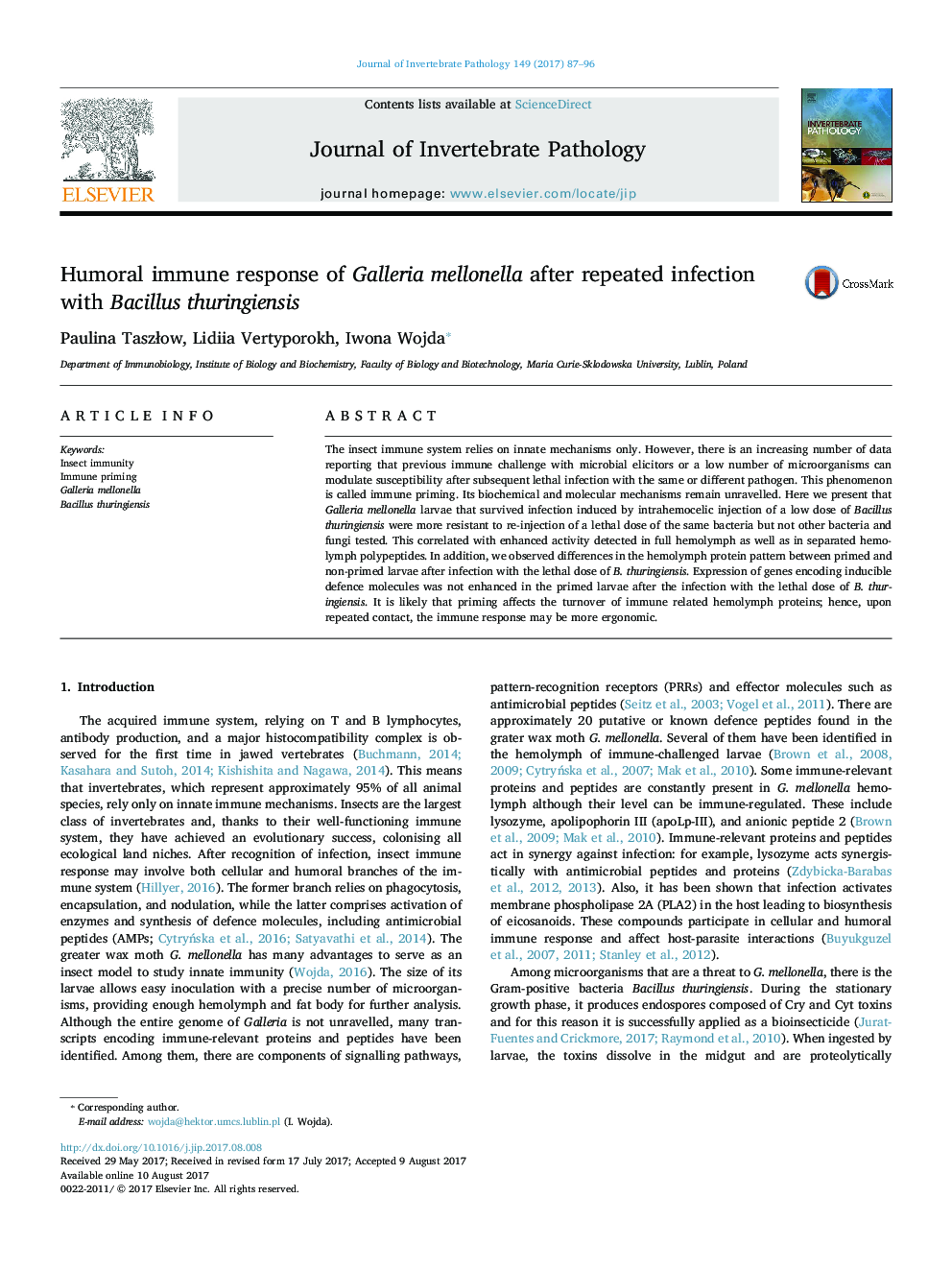| Article ID | Journal | Published Year | Pages | File Type |
|---|---|---|---|---|
| 5766934 | Journal of Invertebrate Pathology | 2017 | 10 Pages |
â¢G. mellonella defence activity is enhanced in larvae primed with B. thuringiensis.â¢Priming affects the protein pattern after subsequent infection.â¢There are more inducible polypeptides in primed larvae after re-infection.â¢Enhanced activity is not correlated with expression of immune-inducible genes.â¢Priming with B. thuringiensis is specific.
The insect immune system relies on innate mechanisms only. However, there is an increasing number of data reporting that previous immune challenge with microbial elicitors or a low number of microorganisms can modulate susceptibility after subsequent lethal infection with the same or different pathogen. This phenomenon is called immune priming. Its biochemical and molecular mechanisms remain unravelled. Here we present that Galleria mellonella larvae that survived infection induced by intrahemocelic injection of a low dose of Bacillus thuringiensis were more resistant to re-injection of a lethal dose of the same bacteria but not other bacteria and fungi tested. This correlated with enhanced activity detected in full hemolymph as well as in separated hemolymph polypeptides. In addition, we observed differences in the hemolymph protein pattern between primed and non-primed larvae after infection with the lethal dose of B. thuringiensis. Expression of genes encoding inducible defence molecules was not enhanced in the primed larvae after the infection with the lethal dose of B. thuringiensis. It is likely that priming affects the turnover of immune related hemolymph proteins; hence, upon repeated contact, the immune response may be more ergonomic.
Graphical abstractDownload high-res image (85KB)Download full-size image
